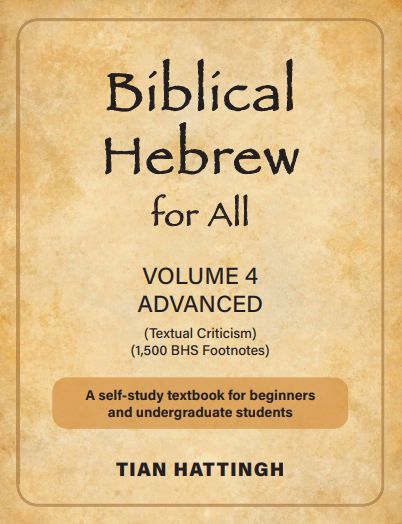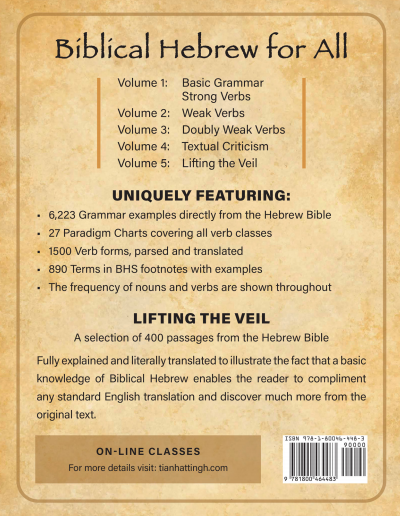Textual Criticism
The large number of elements involved in the process of textual criticism can easily become overwhelming to the beginner. To assist students to refrain from focusing on the trees so much that they lose sight of the forest, we felt it in order to provide an overview of the topics covered in this volume.This volume essentially comprises of four parts.
a)The ancient manuscripts.
The traditions of at least five manuscripts (not all in Hebrew) form the basis of any effort to engage in the process of textual criticism. A thorough knowledge of these manuscripts is absolutely essential in being able to fully understand the subsequent chapters. The manuscripts are dealt with in the chronological order as set out in section 65.7.2, and are individually dealt with in Chapters 66 - 70. In addition, in Chpt. 71 we briefly look at a number of manuscripts that were translated from Hebrew into other languages but nevertheless have an important role to play in the process of textual criticism.
b)The process of textual criticism.
In Chpt. 72 we deal with the causes of corruptions in the Hebrew Bible. In Chpt. 73 the methods employed in the process of textual criticism are covered.
c)Biblia Hebraica.
The Biblia Hebraica series are the standard publications used by students and scholars in this field of study. They are readily available and updated editions have been published in the past (BHK, BH2, BH3, BHS), with the latest edition known as BHQ forthcoming. Chapters 74-78 cover all the remaining aspects needed by students to fully immerse themselves into textually criticizing the text of the Hebrew Bible.
d)Examples from BHS.
How does all the above come to fruition in practice? Chpt. 79 provides students with a list containing at least one example of how each one of 877 Latin terms found in the footnotes of BHS are used. This is done by literally translating the footnotes into English and in most cases then adding some enlightening notes pertaining to those footnotes.



